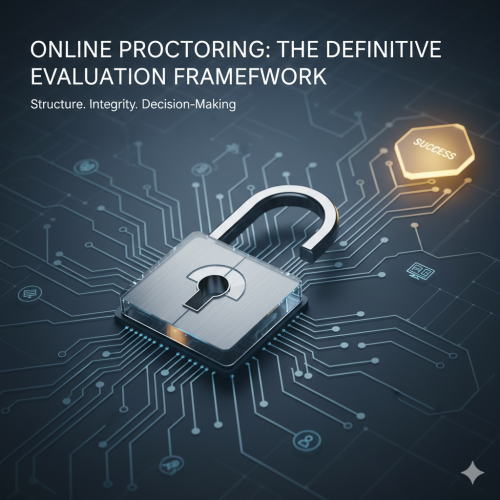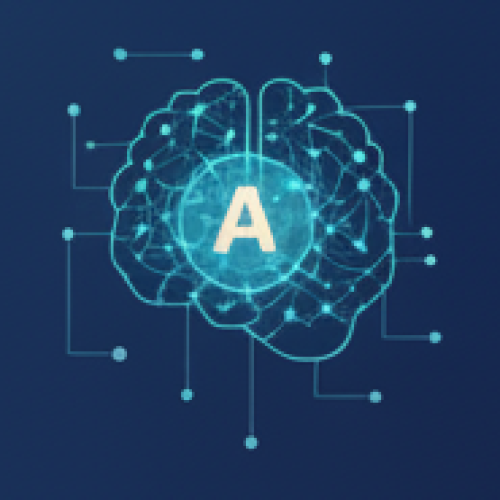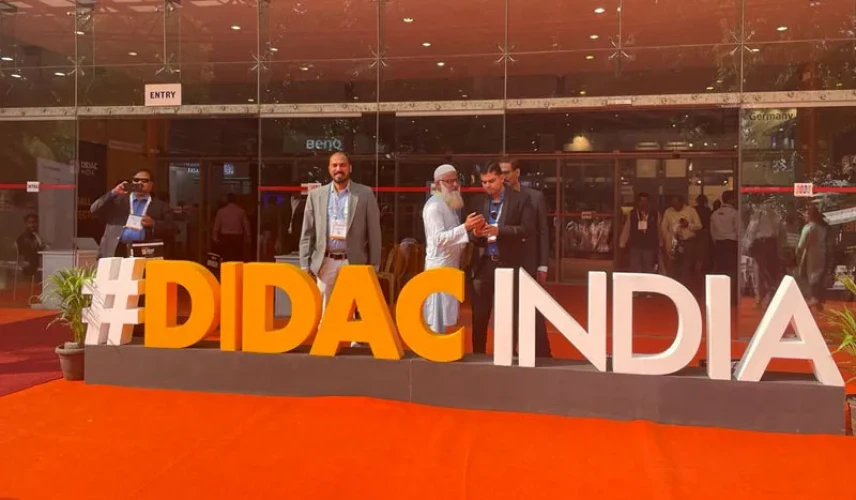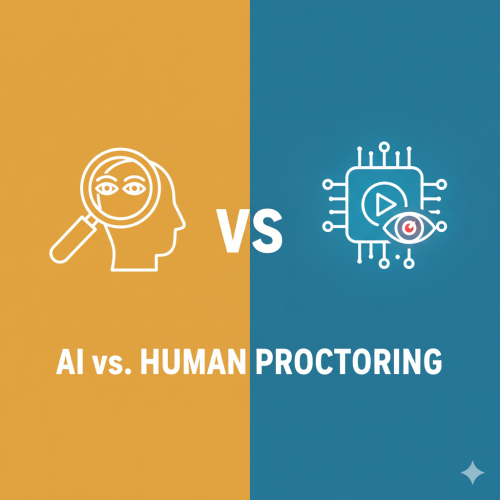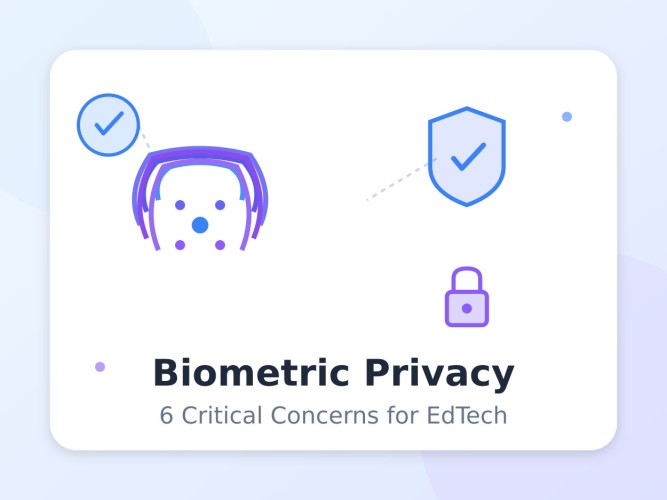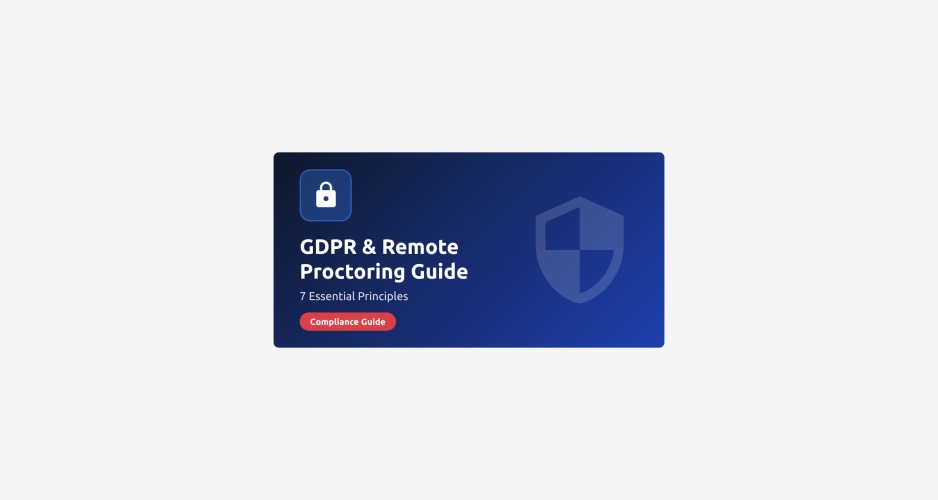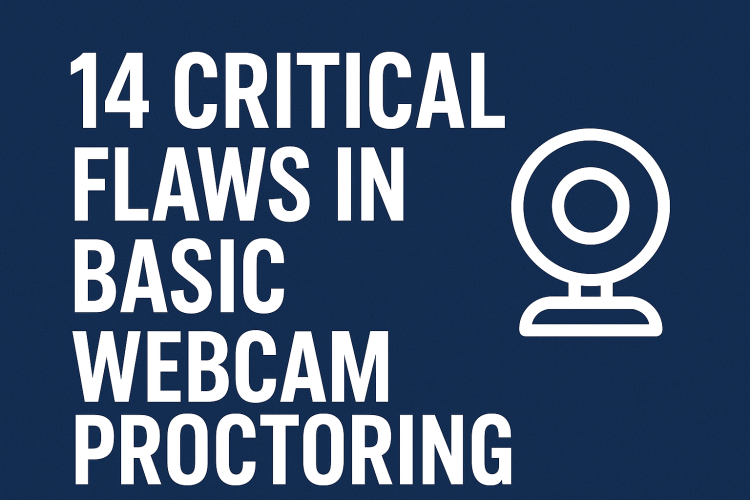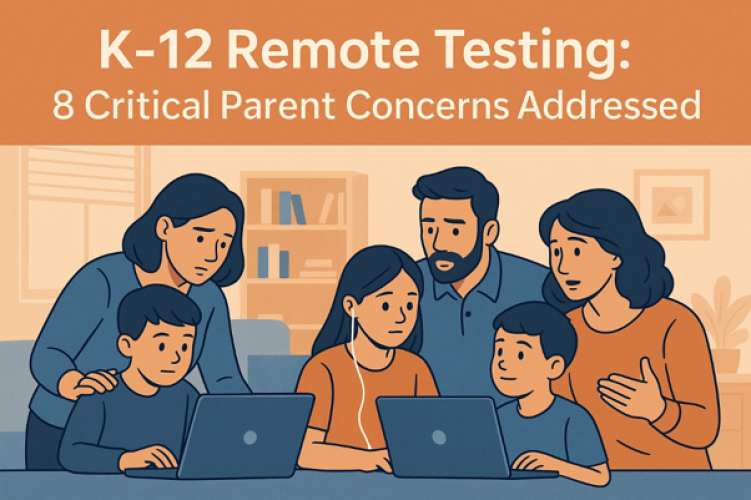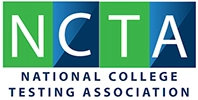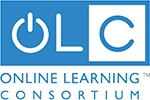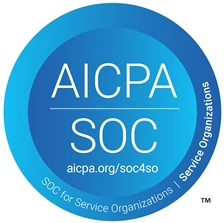The shift to online learning and assessment has created an unprecedented need for secure remote testing solutions. As educational institutions, certification bodies, and pre-employment assessment providers transition to digital delivery models, the integrity of remote assessments has become a critical concern. Remote proctoring technology has emerged as the primary solution to this challenge, but not all proctoring approaches are created equal.
This comprehensive comparison examines how 360-degree monitoring technology fundamentally transforms remote proctoring capabilities compared to traditional methods. By analyzing key features, security effectiveness, user experience, and implementation considerations, this article provides decision-makers with the insights needed to select the most effective remote proctoring solution for their organization's needs.
Whether you're evaluating remote proctoring options for the first time or considering an upgrade to your current solution, understanding the significant advantages of 360-degree monitoring technology is essential for making an informed decision that ensures assessment integrity without compromising user experience or privacy.
The Remote Proctoring Landscape
Current State of Remote Proctoring
Remote proctoring has evolved rapidly in recent years, driven by technological advancements and increasing demand for secure online assessment options. The market now includes various approaches and solutions, each with distinct capabilities and limitations:
- Live human proctoring: Real-time monitoring by human proctors via webcam
- Automated proctoring: AI-powered monitoring and flagging of suspicious behaviors
- Record and review: Recording sessions for later review by human proctors
- Browser lockdown: Restricting access to unauthorized resources during assessments
- Hybrid approaches: Combinations of automated monitoring with human intervention
According to recent market research, the global online exam proctoring market was valued at $836.43 million in 2023 and is projected to reach $1993.85 million by 2029, reflecting the growing importance of remote assessment security across education, certification, and employment sectors.
Common Challenges in Remote Assessment Security
Despite the growth and evolution of remote proctoring, significant challenges persist across all assessment contexts:
- Environmental control: Ensuring the testing environment remains secure and distraction-free
- Identity verification: Confirming the authenticated test-taker is actually the one taking the assessment
- Resource access: Preventing access to unauthorized materials or assistance
- Technical reliability: Maintaining consistent monitoring despite varying internet connections and hardware
- Scalability: Supporting large numbers of concurrent assessments without compromising security
- Privacy concerns: Balancing effective monitoring with respect for test-taker privacy
- User experience: Providing security without creating undue anxiety or technical barriers
These challenges have driven continuous innovation in the remote proctoring space, with 360-degree monitoring technology representing the latest advancement in addressing these persistent issues.
Traditional Proctoring Methods: Capabilities and Limitations
Standard Webcam-Based Monitoring
The most common remote proctoring approach relies on standard webcam monitoring, which typically includes:
Key Capabilities
- Facial view monitoring: Observing the test-taker's face and expressions
- Partial environment visibility: Limited view of the immediate testing area
- Screen sharing: Monitoring the test-taker's computer screen
- Audio monitoring: Listening for suspicious sounds or conversations
- Browser lockdown: Restricting access to unauthorized websites and applications
Fundamental Limitations
- Limited field of view: Standard webcams capture only 90-120 degrees, leaving 65-75% of the room unmonitored
- Fixed perspective: Single, forward-facing view that cannot be adjusted during assessment
- Environmental blind spots: Inability to detect resources or assistance outside the camera frame
- Incomplete context: Difficulty interpreting suspicious movements without full environmental context
- Multiple device vulnerability: Cannot detect secondary devices outside the camera view
These limitations create significant security gaps that sophisticated test-takers can exploit to compromise assessment integrity.
AI-Enhanced Traditional Proctoring
To address some of the limitations of basic webcam monitoring, many providers have implemented AI enhancements:
Advanced Capabilities
- Automated behavior analysis: AI algorithms that detect suspicious movements or expressions
- Gaze tracking: Monitoring eye movements to identify potential screen switching
- Voice detection: Identifying unauthorized conversations or assistance
- Pattern recognition: Flagging unusual testing patterns that may indicate cheating
- Automated flagging: Marking suspicious segments for human review
Persistent Limitations
- Same field-of-view constraints: AI enhancements still rely on the limited webcam perspective
- False positives: Tendency to flag innocent behaviors as suspicious due to limited context
- Incomplete environmental data: AI analysis remains limited by what the webcam can see
- Privacy concerns: More invasive monitoring of personal behaviors without corresponding security benefits
- Technical requirements: Higher bandwidth and processing needs for sophisticated AI monitoring
While AI enhancements improve detection capabilities within the webcam's field of view, they cannot overcome the fundamental limitation of partial room visibility.
Multi-Camera Setups
Some providers have attempted to address visibility limitations through multi-camera configurations:
Potential Advantages
- Increased coverage: Additional cameras can monitor more of the testing environment
- Multiple angles: Different perspectives provide better context for suspicious activities
- Dedicated screen monitoring: Separate camera focused specifically on the screen or workspace
Significant Drawbacks
- Complex setup: Requires test-takers to configure multiple devices correctly
- Inconsistent implementation: Variations in camera placement reduce standardization
- Technical complications: More points of potential failure or connectivity issues
- Resource intensive: Higher bandwidth requirements and more complex monitoring
- User resistance: Significantly more intrusive and burdensome for test-takers
Multi-camera approaches attempt to solve the visibility problem through added complexity, but this creates new challenges in implementation, reliability, and user acceptance.
Understanding 360-Degree Monitoring Technology
What Is 360-Degree Monitoring?
360-degree monitoring represents a fundamental advancement in remote proctoring technology:
Core Technology
- Panoramic cameras: Specialized devices that capture a complete 360-degree view of the testing environment
- Real-time stitching: Software that creates a seamless panoramic view from multiple camera inputs
- Single-device simplicity: Complete room monitoring through a single, dedicated device
- Continuous environmental visibility: Constant monitoring of the entire room throughout the assessment
- Integrated analysis: AI capabilities that can monitor the complete environment for security threats
Unlike traditional webcam monitoring that captures only what's directly in front of the camera, 360-degree technology eliminates blind spots by providing complete visibility of the entire testing space.
Key Technical Differentiators
The technical architecture of 360-degree monitoring provides several distinct advantages:
Hardware Innovations
- Specialized optics: Advanced lens systems designed specifically for panoramic monitoring
- Purpose-built design: Hardware created explicitly for proctoring rather than repurposed webcams
- Optimized positioning: Devices designed for optimal placement in testing environments
- Integrated processing: On-device capabilities that enhance monitoring effectiveness
- Simplified setup: Single-device configuration that reduces technical complexity
Software Capabilities
- Panoramic processing: Specialized algorithms for handling 360-degree visual data
- Spatial awareness: AI that understands the complete room context
- Object recognition: Ability to identify unauthorized materials anywhere in the room
- Movement tracking: Following activity throughout the entire environment
- Comprehensive recording: Complete environmental documentation for review and verification
These technical differentiators enable 360-degree monitoring to overcome the fundamental limitations of traditional proctoring approaches.
Head-to-Head Comparison: 360-Degree vs. Traditional Monitoring
Security Effectiveness Comparison
The primary purpose of any proctoring solution is to ensure assessment security and integrity:
| Security Factor | Traditional Webcam Monitoring | 360-Degree Monitoring |
|---|---|---|
| Field of View | 90-120 degrees (25-35% of room) | 360 degrees (100% of room) |
| Blind Spots | Extensive (65-75% of environment) | None (complete visibility) |
| Off-Camera Cheating Detection | Not possible | Comprehensive detection |
| Environmental Context | Limited to webcam frame | Complete room context |
| Unauthorized Materials Detection | Only within webcam view | Throughout entire room |
| Secondary Device Detection | Limited to webcam frame | Anywhere in the room |
| Assistance from Others | Cannot detect helpers outside frame | Detects any person in the room |
| Deterrence Effect | Moderate (known blind spots) | High (no place to hide) |
Research indicates that comprehensive monitoring significantly reduces cheating attempts. A study by the International Center for Academic Integrity found that when students know they are being fully monitored, cheating attempts decrease by up to 76% compared to partially monitored environments.
User Experience Comparison
The test-taker experience significantly impacts acceptance and effectiveness of proctoring solutions:
| Experience Factor | Traditional Webcam Monitoring | 360-Degree Monitoring |
|---|---|---|
| Setup Complexity | Moderate (webcam positioning critical) | Simple (single device placement) |
| Hardware Requirements | Standard webcam (usually built-in) | Dedicated 360-degree device |
| Personal Monitoring Feeling | High (focused on face and expressions) | Lower (focused on environment) |
| Privacy Perception | Often feels invasive and personal | More environmental, less personally intrusive |
| Technical Issues Frequency | Moderate (webcam positioning problems) | Low (simplified setup, dedicated hardware) |
| Test-Taker Anxiety | Higher (constant facial monitoring) | Lower (less direct personal observation) |
| Accommodations Flexibility | Limited by rigid positioning requirements | More adaptable to different needs |
A recent survey of 1,200 online test-takers found that 68% preferred environmental monitoring approaches over direct facial monitoring, citing reduced anxiety and greater comfort during assessments.
Technical Implementation Comparison
Implementation considerations significantly impact the success of proctoring solutions:
| Implementation Factor | Traditional Webcam Monitoring | 360-Degree Monitoring |
|---|---|---|
| Hardware Deployment | Usually existing webcams | Requires dedicated devices |
| Setup Standardization | Highly variable based on user setup | Consistent with standardized hardware |
| Bandwidth Requirements | Moderate (single video stream) | Moderate to high (panoramic data) |
| Technical Support Needs | High (frequent positioning issues) | Lower (simplified setup process) |
| Integration Complexity | Standard (mature technology) | Moderate (newer technology) |
| Scalability | Good (leverages existing hardware) | Good (purpose-built for scale) |
| Reliability | Variable (depends on user hardware) | High (dedicated devices) |
While 360-degree monitoring may require initial hardware investment, the operational benefits of reduced support needs and higher reliability often offset these costs over time.
Privacy and Ethics Comparison
Privacy considerations have become increasingly important in remote proctoring:
| Privacy Factor | Traditional Webcam Monitoring | 360-Degree Monitoring |
|---|---|---|
| Personal Observation | High (continuous facial monitoring) | Lower (environmental focus) |
| Biometric Data Collection | Often extensive | Minimal or none |
| Data Minimization | Often collects excessive personal data | Focuses on environmental security |
| Perceived Invasiveness | High (feels like being watched) | Moderate (environment monitoring) |
| Transparency | Variable (often unclear what's monitored) | Clear (obvious room monitoring) |
| Accommodation for Privacy | Limited flexibility | More adaptable to concerns |
| Regulatory Compliance | Increasingly challenging | Better aligned with privacy principles |
As privacy regulations like GDPR and CCPA continue to evolve, the environmental focus of 360-degree monitoring often aligns better with privacy-by-design principles than traditional facial monitoring approaches.
Cost-Benefit Analysis
Investment Considerations
Implementing any remote proctoring solution requires careful cost-benefit analysis:
Traditional Webcam Monitoring Costs
- Hardware: Minimal (uses existing webcams)
- Software licensing: $15-30 per test session (industry average)
- Implementation: Low initial setup costs
- Support: Moderate to high ongoing support costs
- Training: Moderate proctor and administrator training needs
360-Degree Monitoring Costs
- Hardware: $150-300 per device (depending on features and volume)
- Software licensing: $20-40 per test session (industry average)
- Implementation: Moderate initial setup costs
- Support: Lower ongoing support costs
- Training: Moderate proctor and administrator training needs
ROI Factors
The return on investment calculation should consider several factors beyond direct costs:
Security Value
- Cheating reduction: 360-degree monitoring typically reduces cheating attempts by 65-80% compared to traditional methods
- Credential value protection: Maintaining the market value of certifications and degrees
- Reputation protection: Avoiding costly academic integrity scandals
- Legal liability reduction: Decreasing exposure to challenges of assessment results
Operational Efficiency
- Support cost reduction: 360-degree monitoring typically reduces technical support tickets by 40-60%
- Proctor efficiency: More effective monitoring with fewer false positives
- Review time reduction: More contextual evidence reduces investigation time
- Standardization benefits: Consistent monitoring approach improves process efficiency
Long-term Value
- Hardware lifespan: Purpose-built devices typically last 3-5 years
- Scalability value: Easier expansion to additional assessment programs
- Future-proofing: Better alignment with evolving security and privacy requirements
- Competitive advantage: Enhanced security as a market differentiator
When all factors are considered, the total cost of ownership for 360-degree monitoring often provides better long-term value despite higher initial hardware investments.
Implementation Considerations
Transitioning from Traditional to 360-Degree Monitoring
Organizations considering an upgrade to 360-degree monitoring should consider these implementation factors:
Assessment Needs Analysis
- Security requirements: Determine specific security needs based on assessment stakes
- Volume considerations: Evaluate the number of assessments requiring proctoring
- User demographics: Consider the technical capabilities of your test-taker population
- Integration requirements: Assess compatibility with existing assessment platforms
- Compliance needs: Identify relevant regulatory and accreditation requirements
Deployment Options
- Organizational provision: Institution purchases and provides devices
- Test-taker provision: Test-takers purchase or rent devices
- Testing center deployment: Devices installed at designated testing locations
- Hybrid approaches: Different models for different assessment types
- Phased implementation: Gradual transition starting with highest-stakes assessments
Change Management
- Stakeholder education: Ensuring all parties understand the benefits and changes
- Pilot programs: Testing implementation with limited user groups
- Training development: Creating effective training for all user types
- Communication planning: Developing clear messaging about the transition
- Feedback mechanisms: Establishing channels for implementation feedback
A structured implementation approach significantly increases the success rate of transitioning to 360-degree monitoring technology.
Integration with Assessment Platforms
Successful implementation requires effective integration with existing assessment delivery systems:
LMS Integration Options
- API-based integration: Direct connection between proctoring and LMS systems
- LTI compliance: Support for Learning Tools Interoperability standards
- SSO implementation: Single sign-on capabilities for seamless user experience
- Grade passback: Automatic transfer of completion status to LMS
- Content synchronization: Coordination between assessment content and proctoring status
Assessment Platform Compatibility
- Browser-based assessments: Integration with web-delivered testing platforms
- Specialized testing software: Compatibility with dedicated assessment applications
- Custom development options: APIs for integration with proprietary systems
- Multi-platform support: Compatibility across different operating systems
- Mobile considerations: Support for tablet-based assessment delivery where applicable
Working closely with both proctoring providers and assessment platform vendors ensures smooth technical integration.
Making the Decision: Is 360-Degree Monitoring Right for Your Organization?
Ideal Use Cases for 360-Degree Monitoring
While 360-degree monitoring offers significant advantages, it may be particularly valuable for specific scenarios:
High-Stakes Assessments
- Professional certifications: Where credential value depends on integrity
- Academic exams with significant weight: Final exams, comprehensive assessments
- Entrance examinations: Where results determine important opportunities
- Pre-employment assessments: Where hiring decisions depend on results
- Regulatory compliance testing: Where legal or regulatory requirements apply
Specific Organizational Needs
- Programs with previous integrity issues: Addressing known security challenges
- Reputation-sensitive contexts: Where public confidence is essential
- Remote programs at scale: Large-scale remote assessment programs
- Hybrid delivery models: Supporting both remote and in-person testing
- Accessibility-focused programs: Where traditional proctoring creates barriers
Organizations should evaluate whether their specific assessment contexts align with these high-value use cases.
Decision Framework
To determine the most appropriate proctoring approach, consider this evaluation framework:
Assessment Characteristics
- Stakes: Higher stakes justify more comprehensive monitoring
- Scale: Larger programs may benefit more from standardized hardware
- Duration: Longer assessments increase the importance of user experience
- Content sensitivity: More sensitive content requires stronger security
- Authentication importance: Critical identity verification needs
Organizational Factors
- Budget considerations: Available resources for implementation
- Technical capabilities: Internal capacity to support implementation
- Risk tolerance: Organizational approach to security risks
- User demographics: Technical capabilities of test-taker population
- Timeline requirements: Implementation schedule constraints
Implementation Readiness Assessment
- Stakeholder support: Is there organizational buy-in for implementation?
- Technical infrastructure: Can your systems support the integration?
- Support resources: Are adequate support resources available?
- Policy alignment: Do your policies support the implementation?
- Change management capacity: Can you effectively manage the transition?
This structured evaluation approach helps organizations make informed decisions about implementing 360-degree monitoring technology.
Future Trends in Remote Proctoring
The Evolving Landscape
Remote proctoring continues to evolve rapidly, with several emerging trends that will shape future implementations:
Technology Advancements
- Enhanced AI capabilities: More sophisticated behavior analysis and anomaly detection
- Improved hardware: Smaller, more affordable 360-degree devices
- Reduced bandwidth requirements: More efficient data transmission and processing
- Biometric advancements: Less intrusive identity verification methods
- Blockchain verification: Immutable records of assessment integrity
Market Evolution
- Standardization efforts: Industry standards for proctoring technology
- Privacy-focused innovation: New approaches that prioritize data minimization
- Integration simplification: Easier connections with assessment platforms
- Accessibility improvements: Better accommodation for diverse needs
- Cost reduction: More affordable implementation options
Regulatory Developments
- Privacy regulation impact: Adapting to evolving data protection requirements
- Accreditation standards: New requirements from accrediting bodies
- Industry certifications: Emerging standards for proctoring providers
- Accessibility requirements: Increasing focus on inclusive assessment
- Global harmonization: More consistent international standards
Organizations should monitor these trends and maintain flexible implementation approaches that can incorporate valuable innovations as they emerge.
Conclusion: The Future of Secure Remote Assessment
The comparison between traditional webcam monitoring and 360-degree monitoring reveals fundamental differences in security effectiveness, user experience, and implementation considerations. While traditional approaches have provided valuable security benefits, they remain constrained by inherent limitations in field of view and environmental visibility.
360-degree monitoring technology represents a significant advancement in remote proctoring by addressing the core limitation of traditional approaches: partial room visibility. By providing complete environmental monitoring through a single, dedicated device, this technology eliminates blind spots while improving the user experience and reducing implementation complexity.
For organizations committed to maintaining the highest levels of assessment integrity in remote contexts, 360-degree monitoring offers compelling advantages:
- Comprehensive security: Complete room visibility eliminates opportunities for undetected cheating
- Improved user experience: Less intrusive monitoring reduces test-taker anxiety
- Operational efficiency: Reduced false positives and support needs lower operational costs
- Future-ready approach: Better alignment with evolving privacy and security requirements
As remote education, certification, and assessment continue to grow in importance, implementing the most effective proctoring technology becomes increasingly critical for maintaining the value and credibility of remote credentials.
Next Steps for Evaluation
To determine whether 360-degree monitoring is right for your organization:
- Assess your current proctoring challenges: Identify specific limitations in your existing approach
- Evaluate assessment stakes and requirements: Determine the security needs for different assessment types
- Request demonstrations of different technologies: See the differences in action
- Consider a pilot program: Test implementation with a limited user group
- Develop an implementation roadmap: Create a phased approach to adoption if appropriate
By taking these steps, you can make an informed decision about implementing 360-degree monitoring technology to enhance your remote assessment security.
About Proctor360
Proctor360 is a leader in remote proctoring technology, offering the industry's most comprehensive 360-degree monitoring solution. Our patented 360 Total View™ technology provides complete testing environment visibility through a single, easy-to-use device that integrates seamlessly with your existing assessment platforms.
To learn more about implementing 360-degree proctoring for your organization, contact our assessment security specialists for a personalized consultation and demonstration.
